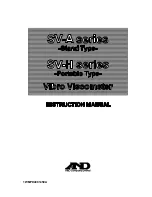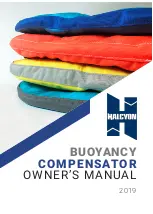
VPAD Manual
16/47
-
Spindle (and accessory)
-
Rotation speed
-
Sample container
-
Sample temperature
-
Sample preparation procedure (if existent)
-
Spindle protection use
The process is necessary in the event of comparison of results with other organizations, in the interest
of being able to guarantee the possibility of reproduction of the results obtained.
The spindle and its protection
Examine each spindle before using it. If it’s damaged or eroded in such a way that its dimensions are
changed, it will provide false results for your viscosity reading.
The spindle protector (provided with every Fungilab rotational viscometer) protects the spindle and
the viscometer axle and it is important for the reading of low viscosities with standard spindles.
The protector should always be used. In the event that it is not used, its absence must be reported in
the measurement procedure notes.
The protector isn’t used with most of the accessories.
Speed selection and spindle
If there is no described work procedure, the best method for the selection of the spindle for each
speed is “trial and error”. The objective is a torque reading between 15 and 95%, according to the
type of product in question and a percentage higher than 50% is recommendable.
If you know the fluid’s approximate viscosity, the quickest spindle/speed selection method is referring
to the tables of maximum approximate viscosity.
When you do tests at different speeds, you should select a spindle with which all of the speeds show a
torque reading of between 15 and 95%
GENERALLY:
RPM INCREMENT
READING PRECISION INCREMENT
SPINDLE SIZE-REDUCTION
READING PRECISION INCREMENT
(Except for the non-Newtonian fluids that change their viscosity value when the rotational speed is
modified. In these cases we recommended measuring with a determined speed and using a
comparison method.)
Size of the sample container
For measurements using the Fungilab viscometer, we recommend working with containers with an
interior diameter of 83 mm or more. The usual container is a 600 ml precipitation vase.
If a smaller container is used, the viscosity values could be greater, especially with low-viscosity fluids.
Sample conditions
The sample should be free of air bubbles.
It should be exposed to a constant and uniform temperature. Before doing the viscosity readings,
make sure that the spindle and its protection are the same temperature. Usually, thermostatic baths
are used to maintain the sample at the desired temperature.
The sample should have the properties of a homogeneous liquid; this means that it cannot have
particles capable of being precipitated, deformed by the shear rate or decomposed into smaller
particles.
The measured substances shouldn’t be subject to chemical or physical changes during the
measurement.
Other essential conditions
















































